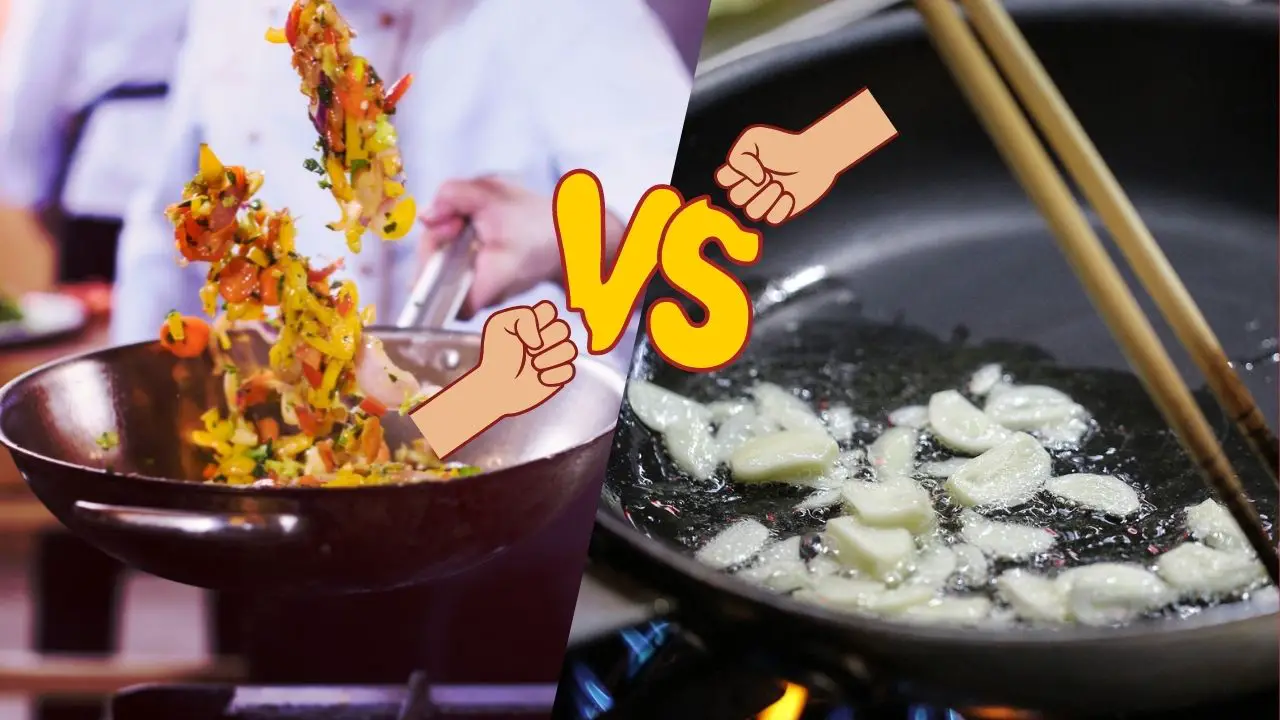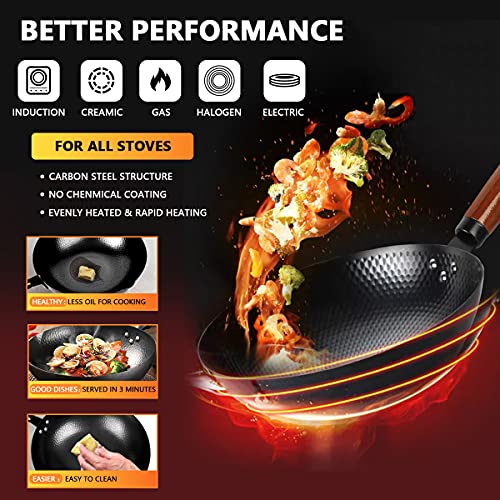Using a wok can open up a whole world of culinary possibilities, thanks to the unique properties that the special round-bottomed cooking pot has. Unlike other pans such as saucepans or frying pans, woks can be used to cook foods in a variety of different ways, to achieve entirely different tastes and textures for all kinds of foods.
But what actually makes a wok so special? Is there any reason at all that you should favor it over a traditional frying pan? If you’ve ever wondered what are the main differences between a wok and a frying pan, and what foods are better suited for each pan, then you have come to the right place.
5 Reasons Why Use a Wok Instead Of a Frying Pan!
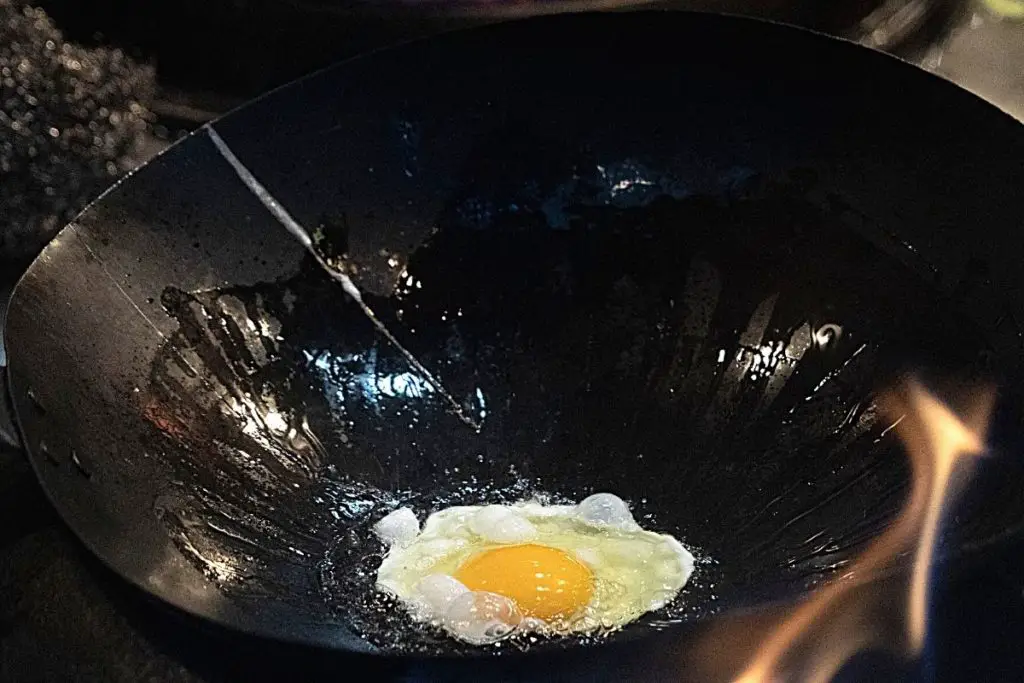
What Is The Difference Between A Wok And A Frying Pan?
The most obvious difference between a frying pan and a wok is the shape. A frying pan is typically wide and flat and features very short sloped walls. This wide surface allows oils, sauces, and other things to rest flat on the surface to make an even cooking area, great for frying foods like meats, eggs pancakes, and so on.
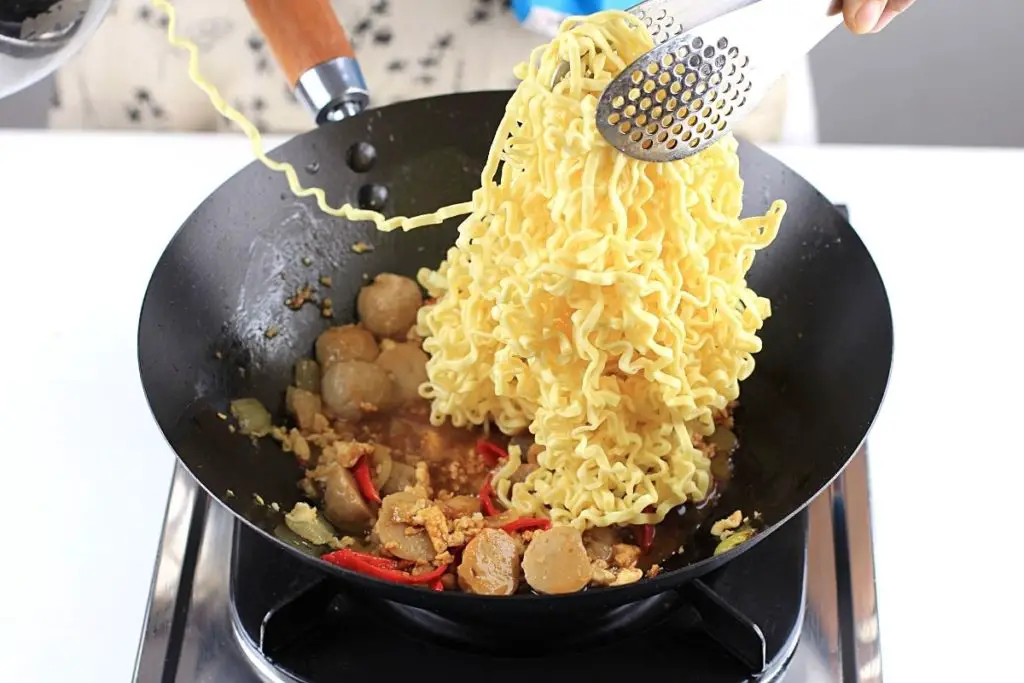
Unlike a frying pan, a wok features a much smaller round-bottomed or small flat-bottomed surface, but has curved, concave shape walls, making it appear much larger. This difference in shape does actually have a difference when it comes to cooking, as the tall sloped walls of the wok help to trap heat and circulate it around more effectively, which causes food to cook much quicker.
Now, if you are worried that the round bottom wok won’t work on your flat surface electric stove then check out my post here: How To Use A Wok On An Electric Stove.
Why Use A Wok Instead Of A Frying Pan?
Now that we know the main difference between a wok and a frying pan, let’s take a look at some of the ways that a wok is superior!
1. Made Of Carbon Steel
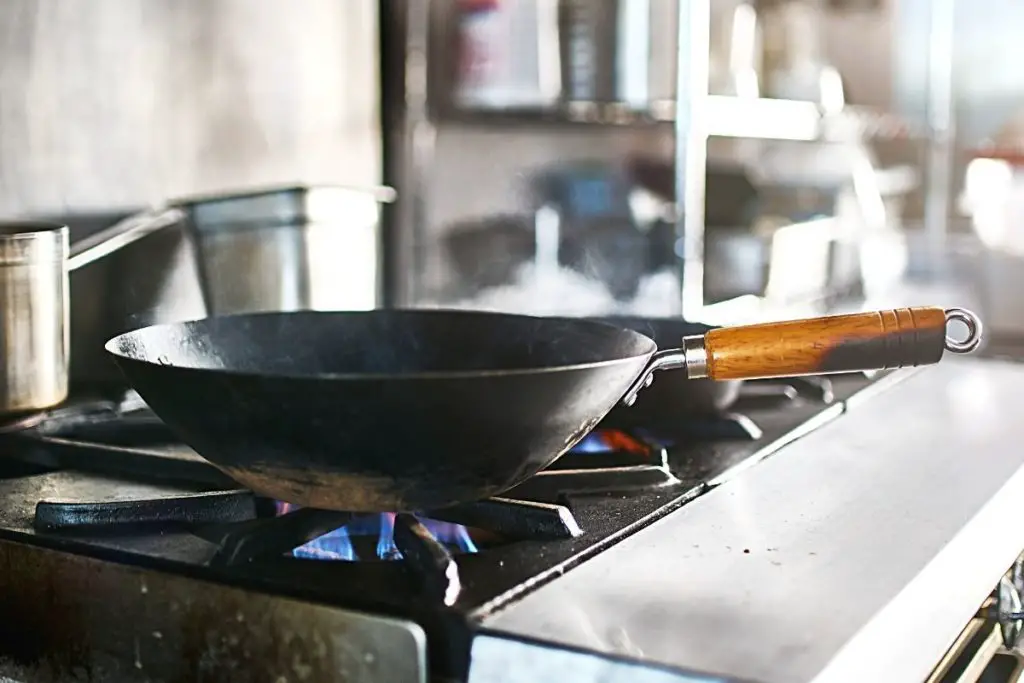
Woks, unlike frying pans, are mostly made from carbon steel, which is able to retain heat far more effectively. This, combined with the tall sloped walls of the pan, allows ingredients within a wok to cook and mix far more evenly, and a lot quicker.
Frying pans are made up of stainless steel, or cast iron which has also excellent thermal density and is very effective at allowing you to fry foods on an electric and induction cooktop, but the low-sloped walls mean that cooking only ever really takes place with parts of food that are directly touching the pan, meaning you will have to move and turn food around a lot to achieve an even cook on all sides.
Carbon steel wok is also lighter in weight in comparison with cast iron or stainless steel frying pans.
2. Has A Larger Capacity
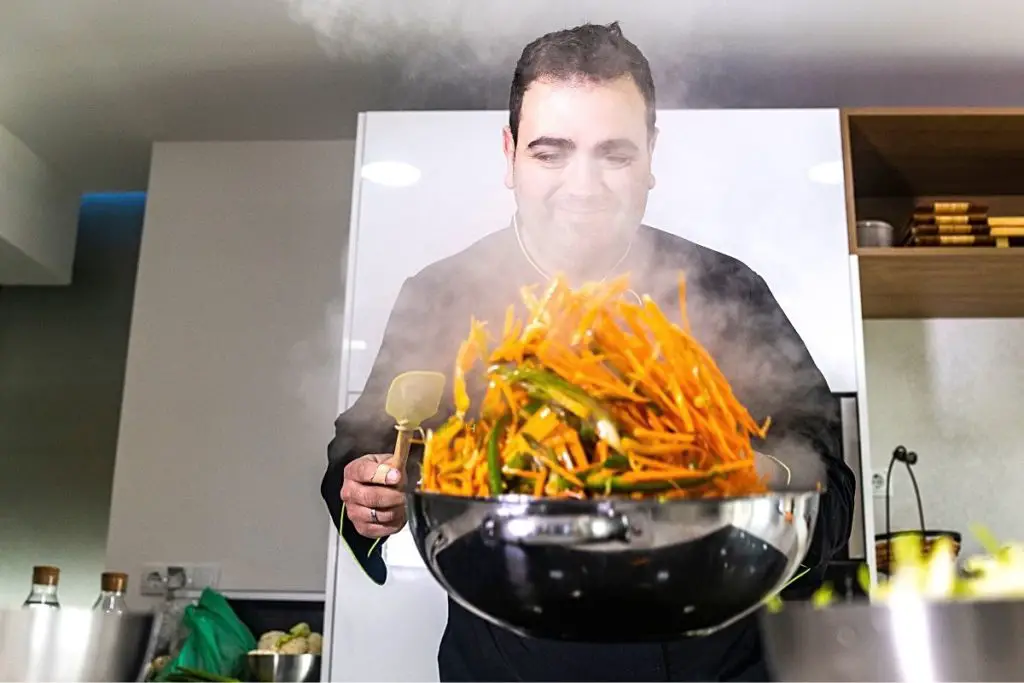
One of the very best reasons to opt for a wok is that a wok has a much greater capacity of 4-5 quarts (3.7-4.7 liters) on average. Comparison to an average size frying pan which has a capacity of 2-3 quarts (1.9-2.8 liters).
So, when cooking for a crowd or a large family, simply throw everything into the wok and fry it all up together. The tall walls ensure that nothing will slip out of the wok as you cook, so you can really stir things up, literally and figuratively.
This also means that works are great for allowing you to make delicious Stir-Fries, Pad Thai, Beef, and Broccoli, Lo Main, and Chow Mein as there is enough capacity to throw everything in and allow it to toss and flip together.
The larger capacity of a wok is also benefited by the large curved wall, because the walls ensure that the heat circulates around the pan, allowing all of the food within to cook more evenly.
3. Suitable For a Wide Variety Of Cooking Methods
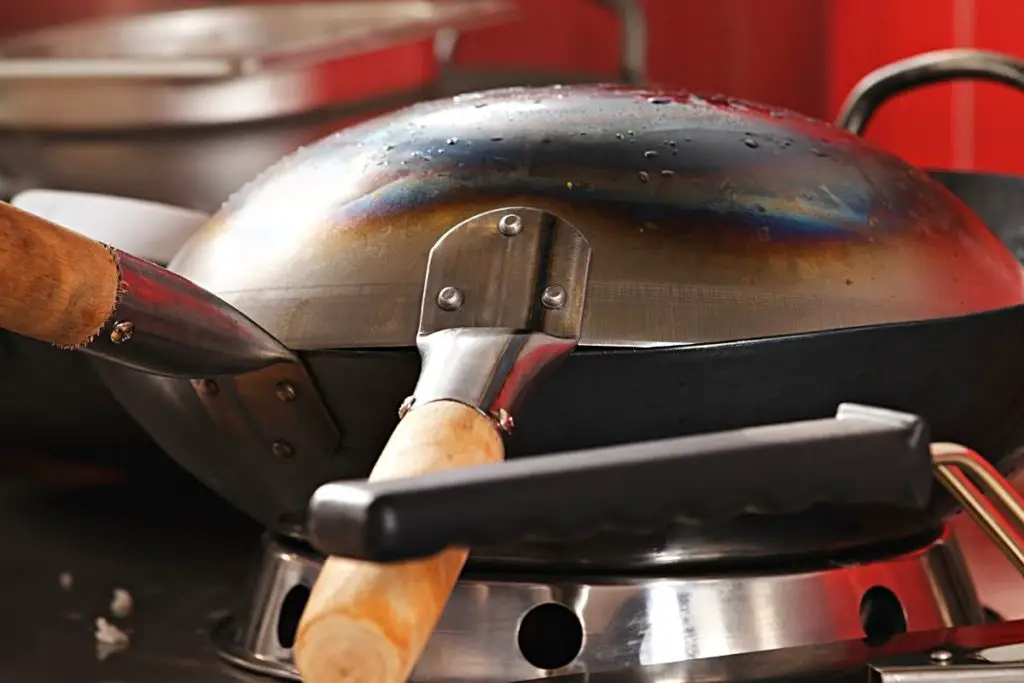
The large size, heat retention properties, and concave shape of a wok make it easier to apply different cooking methods.
A wok is perfect for some of the most beloved cooking methods like braising, sauteing, searing, blanching, steaming, flash-frying, shallow frying, deep-frying, dry frying and even making popcorn making it just as useful as your standard frying pan.
Of course, don’t forget about Wok Hei. Wok Hei is a Chinese cooking term ‘breath of a wok’ that refers to the unique flavor imparted by using a wok over high heat. The flavor comes from a technique known as “frying in hot oil.” The oil heats up quickly on an open flame, and while it evaporates, it mixes with the food and creates a strong smoky odor and flavor distinctive to many Asian dishes.
4. Allows Faster Cooking
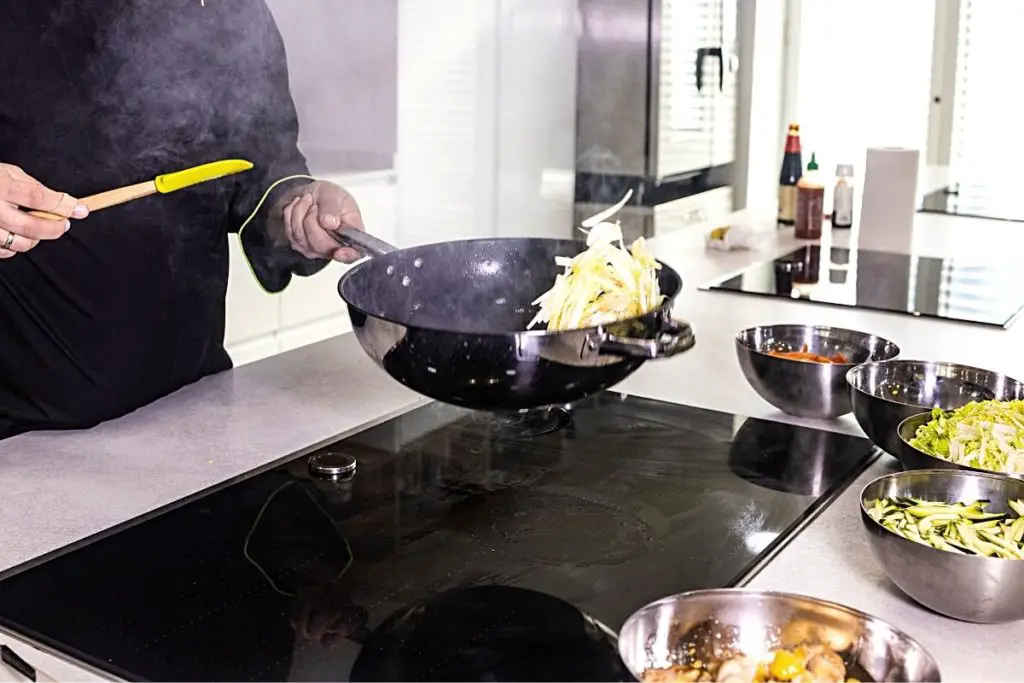
As mentioned earlier, the large raised walls of a wok, as well as the carbon steel construction, allow heat to more easily cycle around the ingredients within. However, this is also beneficial because it means that you can quickly cut down on your cooking time using flash-frying or stir-frying.
Even when cooking multiple portions of the dish at the same time, it will cook in record time using a wok, and everything will come out cooked completely evenly once you have mastered the tossing.
5. Is Very Durable
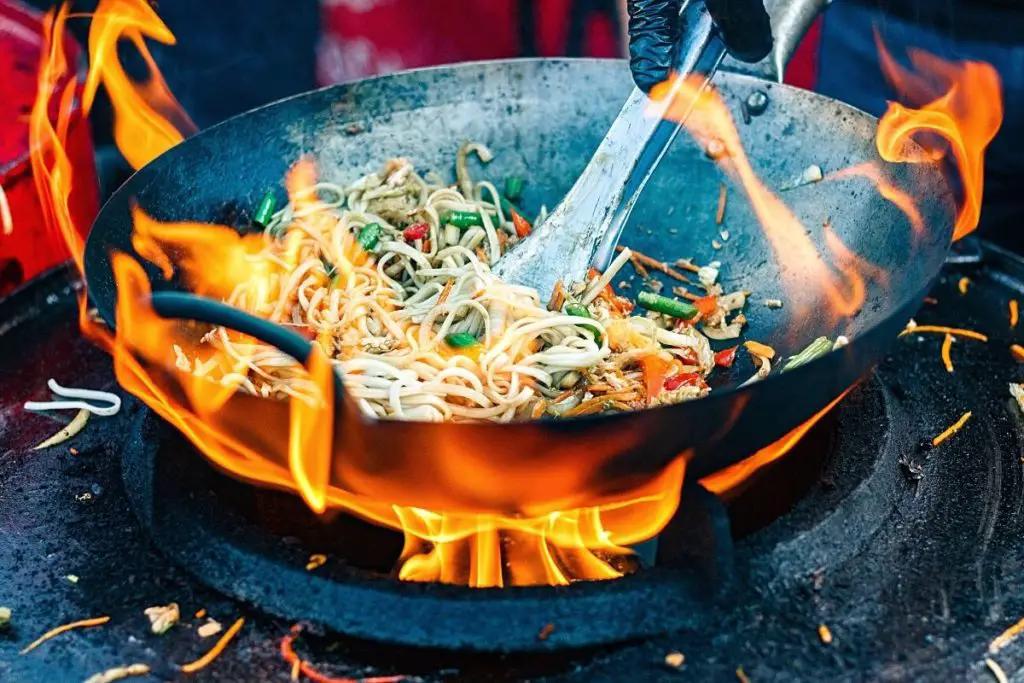
A good quality wok pan will last years to come and can easily withstand any amount of trouble you put it through. The carbon steel used to construct a wok is super durable and is able to work perfectly with truly intense fire and heat that other pans may not be able to withstand. The carbon steel will not begin to warp when subjected to high heat.
Durability also counts when it comes to tossing and flipping. Because of the larger capacity of a wok, it is easy to cook plenty of food in one go. Most wok pans will have long handles that are designed for flipping the food and are adequately screwed into place so that handles won’t shift or break while tossing or flipping!
6. Great For Soups And Boiling
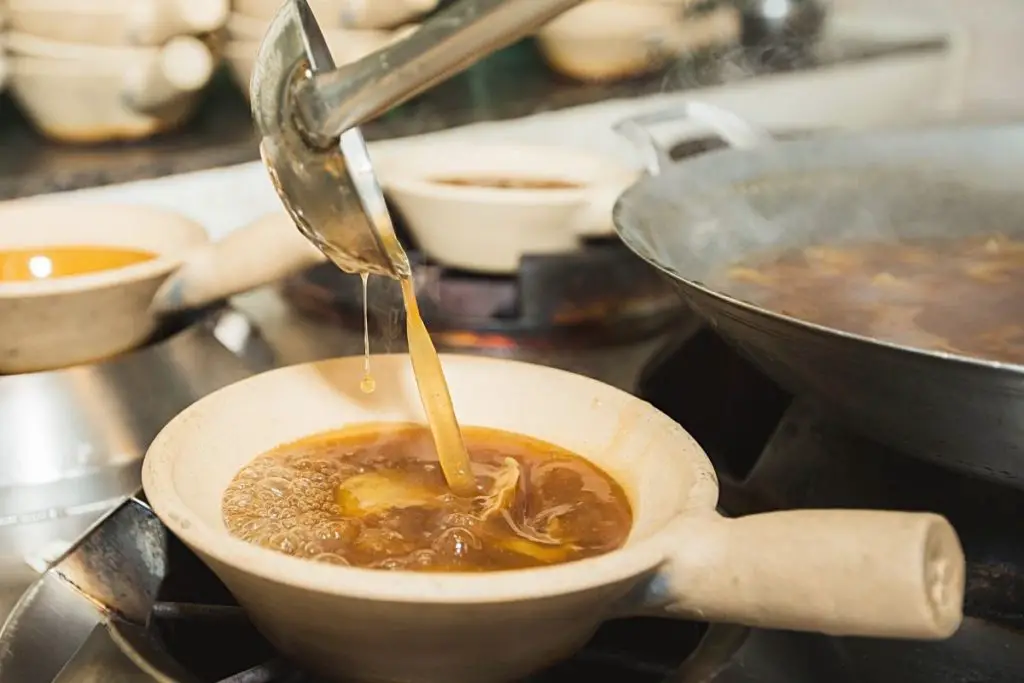
Wok is a real unitasker. It is one of the most versatile cookware at a chef’s disposal. Not only can it replace your regular frying pan, but it can also replace your pot and a saucepan. Wok can effectively be used to make soups, ramen, boiled rice, or even pasta. The large pan size allows you to cook a large quantity of pasta, and later on, you can use it to mix with the sauce quickly.
Is It Worth Getting A Wok?
TAP ON IMAGE TO VIEW PRICE
Now that you’ve seen some of the benefits that a good wok can offer, you may be wondering whether it is worth getting rid of your old frying pan and getting a wok instead!
Personally, I think your kitchen could use both. If you have never used a wok before, I won’t lie, it takes some time to get used to. But once you have mastered it you could find yourself hardly ever using a regular frying pan again.
However, before you rush out to get this round-bottomed pan, ask yourself these few questions below to make sure that you would really benefit from this kitchen tool.
Do you cook a large amount of food and often find that your standard frying pan just doesn’t have enough space? If so, a wok would be perfect for you! Not only would you be able to more easily cook plenty of food without making a mess, but you would also be able to cook that food far quicker, and more evenly.
Do you often cook Asian food and struggle to get that authentic taste and texture? If so then wok is perfect for cooking foods like stir-fry, chow mein, lo mein, fried rice, pad Thai or kung pao chicken. It is also great for quickly and easily creating a variety of your own Asian-inspired dishes.
Do you like to experiment and take your cooking skills to the next level? If so then wok is a perfect kitchen tool to start with. It is a versatile cooking vessel that can be used for many classic cooking methods and recipes, giving them a new and interesting twist.
You could certainly benefit from having a wok if you use cooking methods such as shallow frying, deep-frying, braising, sauteing, and searing. With a little practice and getting used to, a wok can easily cater to all of these methods, giving you an all-in-one tool that is perfect for all of your cooking needs.
Frequently Asked Questions
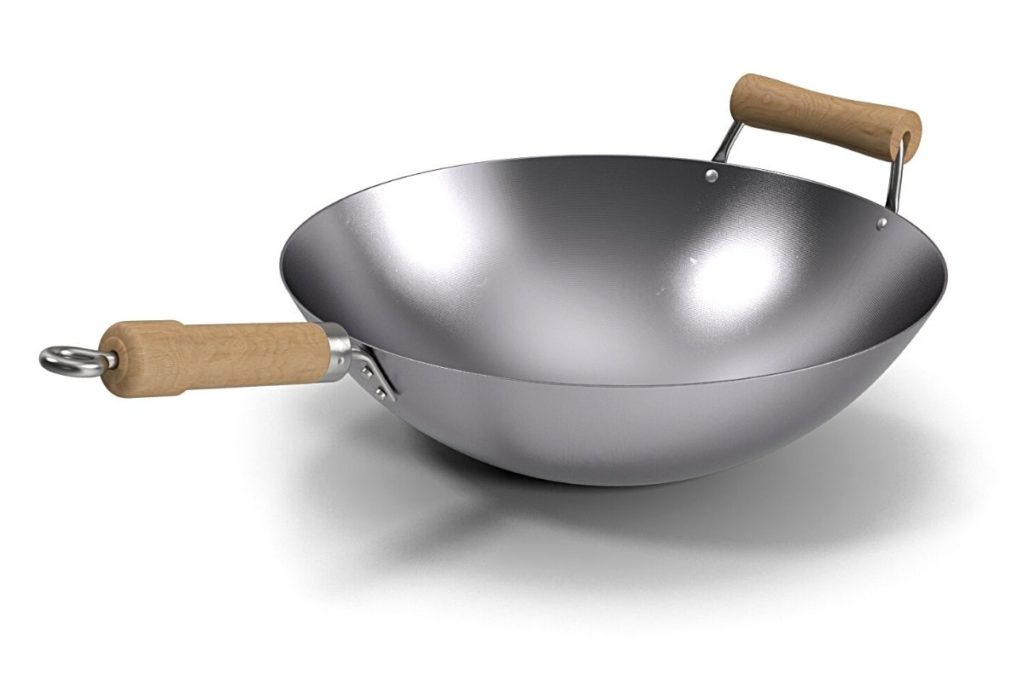
What Are Some Of The Disadvantages Of Cooking With a Wok?
A wok is a versatile cooking vessel that can be used for many different types of food. However, there are a few downsides to cooking with a wok. Firstly, a round bottom wok won’t work that effectively on flat surface electric cooktops and need a work ring to hold it in place. Also, the tossing and flipping of food may need some practice before you can use it effectively without burning the food.
Can You Make Scrambled Eggs In a Wok?
Absolutely and not just Cantonese-style scrambled eggs. Even the regular, fluffy, and moist scrambled eggs cooked in a wok are a quick and easy breakfast or lunch option. The wok heats quickly and is a perfect shape for scrambling. Additionally, the naturally non-stick surface makes cleaning the wok a breeze.
Is Wok Cooking Healthy?
Leaving the ingredients aside, using a wok is generally considered a healthy cooking method as it doesn’t need much oil and the food tends to retain more of its nutrients. Also, when seasoned properly, the wok is naturally non-stick. However, there are some concerns about cooking on very high heat, the low smoke point oils will start to break down and produce unhealthy chemicals.
So, make sure to always use high smoke point oils when cooking on high heat.
Can You Use Wok On Induction Hob?
Yes, you can use most wok pans on an induction hob; however, there are a few things to keep in mind. First, because induction hobs work with electromagnetic energy, they are more sensitive to the material, size, and shape of the cookware than traditional gas or electric hobs.
Therefore, it is important to use a wok that is specifically designed for induction cooking. Luckily, carbon steel, similar to cast iron, is excellent on all stoves, including induction cooktops.
Read Also: How To Tell If Oil Is Hot Enough To Fry? (6 Proven Methods).
In Summary – Why Use a Wok Instead Of a Frying Pan
A well-seasoned wok is a versatile kitchen tool that can be used for stir-frying, deep-frying, searing, braising, and much more. Some chefs believe that it is a better option than a regular frying pan because it distributes heat more evenly allowing fast and even cooking.
